|
|
|
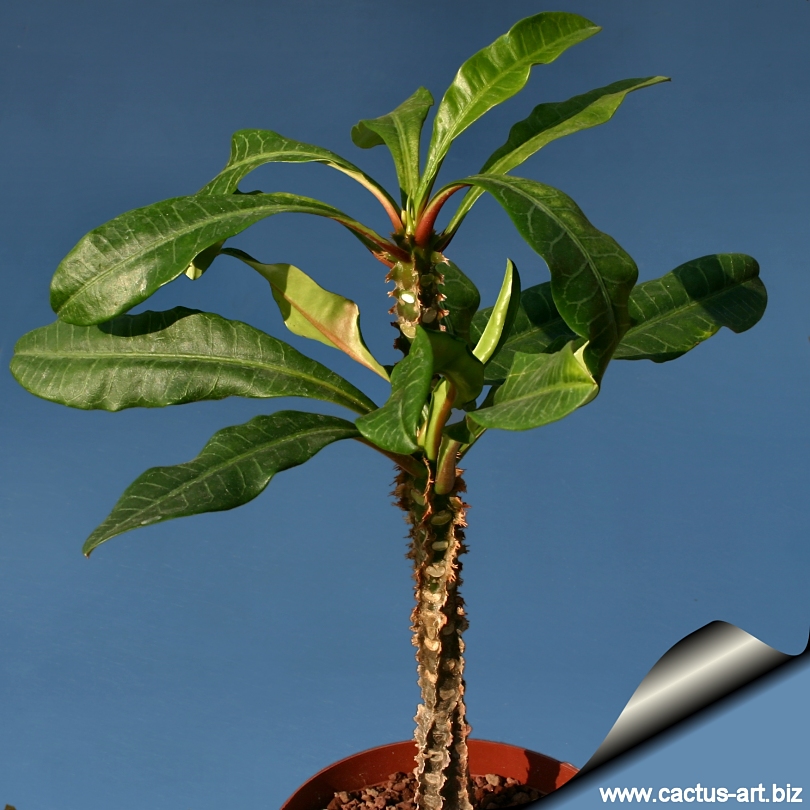
This species look like a Madagascar Jewel.
|
|
Description: Medium-sized ever-green or
semi-deciduous succulent shrub, up to 120 cm tall
Stem: Unbranched or sparsely branched, sometimes spiraling,
narrowing to the top, with longitudinal rows of thorns, with a diameter
of 3 cm. The branches are 5-angled, broadening toward the tips, have
grey leaf-scars, and are dark green to olive brown.
Leaves: Glossy bright green, elliptic, 12 by 2.5(-5) cm long,
fleshy to quite leathery, with a prominent mid-vein, laced with white
veins, and grow near the top of a stem. The leaf-stalks are 1.5 cm long
and rather thick.
Flowers: The inflorescence of this species is usually on stalks,
the true flowers are yellowish-green encircled by large white to
pink pseudo flowers on a greenish-red stalk.
Blooming season: Summer
|
 |
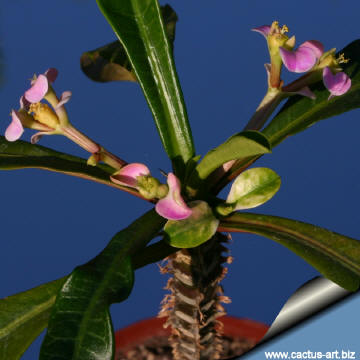
|
NOTE: E. lophogona var. lophogna is distinguished from
E. lophogona var. tenuicaulis, which is smaller and has whitish or
pink pseudo flowers. Hybrids from this plant (e.g. Euphorbia x lomi
(Euphorbia lophogona x Euphorbia milii) are among the most popular
succulent plants in the international trade.
|
|
Cultivation: Half sun to lit shade appears to
be the optimum range but tolerate the most shade. Relatively flexible in
its watering requirements. They can be watered regularly as long as the
medium is open and well drained. As with any normal plant when watering,
it is best to do so thoroughly, until a little water comes out through
the drain holes. Allow the medium to dry out somewhat between waterings.
Reduce watering to once every 1.5 weeks during winter. Space plants
apart to allow air movement between branches and leaves. This will help
with evaporation of extra water droplets collected during watering.
The ideal potting-medium is one with good moisture-retaining capacity
but open and well drained with some extra manure for added nutrition.
Regular fertilizing with low nitrogen and high phosphorus and potassium
ratios are preferred. Feed during spring and summer to mid autumn and
withhold feeding during winter. Tall plant will benefit from being
staked, with bamboo or other suitable stakes, in order to stabilize the
plants and provide a counterbalance to the weight of the masses of
flowers. In the absence of staking, the stems of the plants will be
under extreme pressure and may snap under the weight. Very tender,
protect from frost.
Reproduction: Cuttings It is recommend taking Euphorbia cuttings
in Spring/Summer when the plant is growing so that they have a better
chance of success. They key is heat & good air circulation. These
cuttings should be dipped in Hormone powder (but it is not needed) and
left for a period of 3-4 weeks to callous. Then pot the cutting and
don't water ( or kept slightly moist) until rooted. These will root just
fine, if you can put the pot outside in the summer, or put pot on a
heating pad.
Warning: As with all other
Euphorbias when a plant get damaged it exudes a thick white milky sap
known as latex. This latex is poisonous and particularly
dangerous for the eyes, skin and mucous membranes. So
pay extreme attention not to get any in your eyes or mouth.
Cultivated plants must be handled carefully. |
|


|
|
Advertising
|
|
|
|
|
Family:
Euphorbiaceae
Scientific name:
Euphorbia lophogona
Lamarck
Encycl. 2:417. 1788
Described by Jean Baptiste Lamarck in 1786 from plants that had been
introduced into Europe from Madagascar.
Origin: Endemic to Madagascar (Provinces: Fianarantsoa,
Toamasina, Toliara Other important sites: Ile Ste Marie)
Conservation status: Listed in
CITES appendix 2.
Common Names include: 'Randramboay', ‘White Crown
of Thorns’.
Habitat: Subtropical
or tropical coastal rainforests with a sandy soil. Elevation (m) 0-499
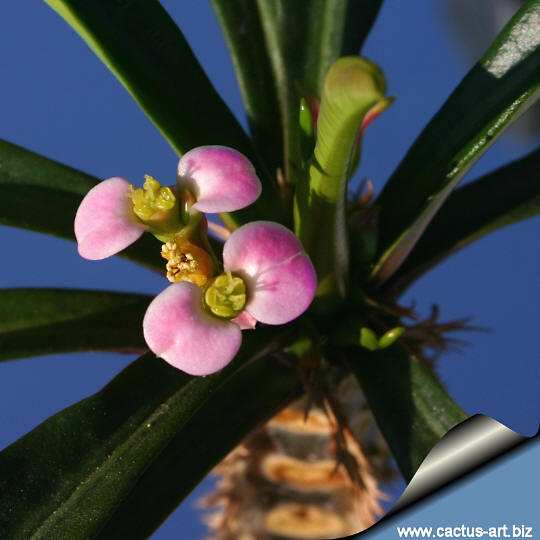
The true flowers are yellowish-green encircled by large white to
pink pseudo flowers on a greenish-red stalk.
|
|
|
|
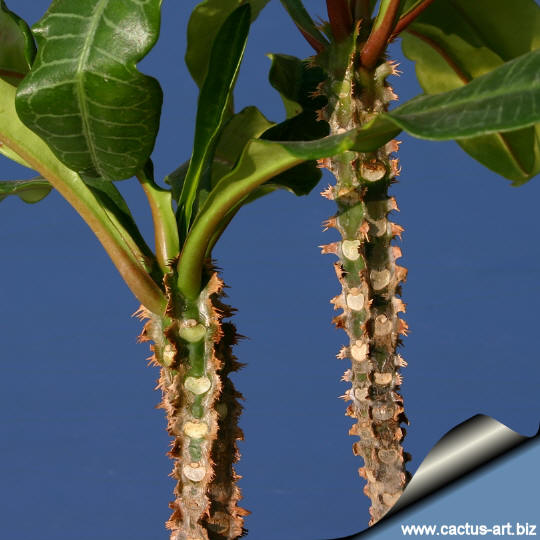
It is quite distinctive for its angular stems, with longitudinal
rows of thorns and large leaves that are quite leathery and laced with
white veins.
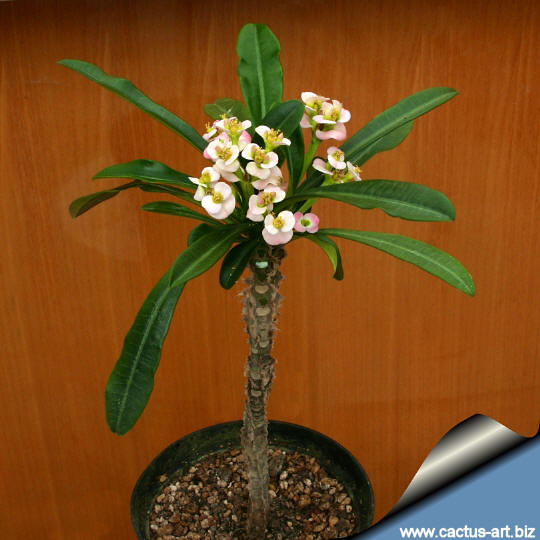
|
|